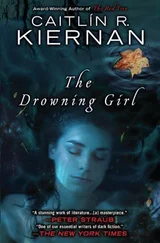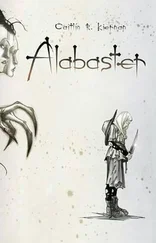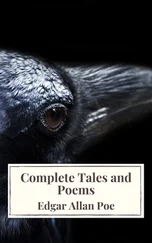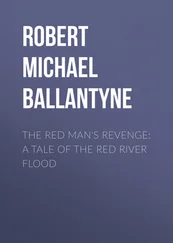Caitlin R. Kiernan - The Red Tree
Здесь есть возможность читать онлайн «Caitlin R. Kiernan - The Red Tree» весь текст электронной книги совершенно бесплатно (целиком полную версию без сокращений). В некоторых случаях можно слушать аудио, скачать через торрент в формате fb2 и присутствует краткое содержание. Жанр: Ужасы и Мистика, на английском языке. Описание произведения, (предисловие) а так же отзывы посетителей доступны на портале библиотеки ЛибКат.
- Название:The Red Tree
- Автор:
- Жанр:
- Год:неизвестен
- ISBN:нет данных
- Рейтинг книги:3 / 5. Голосов: 1
-
Избранное:Добавить в избранное
- Отзывы:
-
Ваша оценка:
- 60
- 1
- 2
- 3
- 4
- 5
The Red Tree: краткое содержание, описание и аннотация
Предлагаем к чтению аннотацию, описание, краткое содержание или предисловие (зависит от того, что написал сам автор книги «The Red Tree»). Если вы не нашли необходимую информацию о книге — напишите в комментариях, мы постараемся отыскать её.
The Red Tree — читать онлайн бесплатно полную книгу (весь текст) целиком
Ниже представлен текст книги, разбитый по страницам. Система сохранения места последней прочитанной страницы, позволяет с удобством читать онлайн бесплатно книгу «The Red Tree», без необходимости каждый раз заново искать на чём Вы остановились. Поставьте закладку, и сможете в любой момент перейти на страницу, на которой закончили чтение.
Интервал:
Закладка:
I found my car keys, and I considered the undeniable wisdom of driving away, driving anywhere that isn’t here, and never looking back. I suspect that I could probably torch the house without getting much more than a stern “thank you” letter from Blanchard. Isn’t that how these haunted-house stories usually end, with a purification by fire? Isn’t that the handy old cliché?
I didn’t telephone anyone. I didn’t drive away. I’m not going to burn the house down and sow the charred ground with salt. And I’m not going after the tree with a chain saw or a hatchet or a can of gasoline. The worst I am capable of is following Virginia Woolf’s example and filling my pockets with stones before walking into the local equivalent of the River Ouse.
I have gone to the attic, and Constance isn’t there, but I still do not know if I am alone in the house.
I seem to have been afflicted with some unprecedented calm, something that settled over me while I was upstairs and which shows no signs of abating. Again, I know we’re running counter to the received wisdom, in which our heroine, having glimpsed some unthinkable atrocity, parts ways with her sanity (at least for a time) and runs screaming into the night. Perhaps it’s only that those sorts of books and movies are, too often, made by people who have never, themselves, stood at this threshold. Even Catherine ran screaming, that sunstroke day at Cabeza de Lobo. Couldn’t I at least be as weak as poor Catherine?
No.
Fine. Then I’ll write it down.
I went to the attic, immediately after finishing the entry this morning. Twice, I called out for Constance, and twice, no one answered me. I knocked, to no avail, and so I knocked again, and harder. There was a moment of serious déjà vu, a moment when it might still have been Saturday morning, after I discovered the fishing line leading away from the back porch, but before I followed it to the red tree. Then I tried the knob, and found that it turned easily in my hand, and the spell was broken. The door was not locked against me, and I couldn’t help but recall what both Amanda and Constance had told me in the dream— Like all doors, it tends to swing open, and so care must be taken to mind the hinges and the latch.
A door, a tree, a hole for a white rabbit and a middle-aged novelist. Six of one, half dozen of the other.
In a another moment down went Alice after it, never once considering how in the world she was to get out again.
The rabbit hole went straight on like a tunnel for some way, and then dipped suddenly down, so suddenly that Alice had not a moment to think about stopping herself before she found herself falling down what seemed to be a very deep well.
We speak in whimsy, or to children, and it all appears so uncomplicated, no matter how outlandish or monstrous a given scene may be. Me, I can’t even seem to manage the tongue of madness without constant recourse to the perspective of reason, though I know it’s long since ceased to be pertinent to my situation and circumstances.
I turned the knob, and the attic door swung open wide. And the cool air that I am so used to greeting me when Constance opens her door wasn’t there to greet me. And instead of the smell of painting, there was a dank, shut-away odor, and, beneath that, the heady stink of decaying vegetation. I covered my mouth with my hand, with my right hand, and stepped into the attic. I left the door standing open.
The rabbit hole went straight on like a tunnel for some way, and then dipped suddenly down, so suddenly that Alice had not a moment to think about stopping herself before she found herself falling down a very deep well.
The attic was not dark, but, as usual for so early in the day, brightly lit by the sun shining in through the small, high windows. Constance told me more than once that the morning light was one reason she was happy with her garret. So, I can’t dismiss what I saw there as a trick of shadow, an illusion created by a chiaroscuro conspiracy of half-light and poor eyesight. I cannot dismiss it at all, unless I am able (I am perfectly willing ) to decide that it was an hallucination. I will not say “only” an hallucination, because I am not so naïve as to believe that what was seen would be any less important or consequential if it were the product of a broken mind and not an accurate perception of an objective, external reality. But yes, the attic was very well lit. Indeed, after the gloom of the stairwell, I found Constance’s room painfully bright, and I squinted and had to wait a second or two for my eyes to adjust.
There was no one in the attic, no one but me, and the floor, and every other horizontal surface, was hidden beneath a thick blanket of green oak leaves. They were identical to the three I found in my room in July, and identical to those that grow on the tree near Ramswool Pond. They were not the least bit brittle or wilted. They appeared to have come freshly from the tree, or from some other tree of the same species. I didn’t scream. I didn’t even gasp. I think that I was expecting something, even if I could not have said what form that something might assume. I bent down and picked up one of the leaves, as though I needed to touch it, to hold it, to inspect the fine network of veins embedded within the pith, in order to verify that the leaves were real. But I must have known they were. I must have known that on some intuitive level as soon as I saw them, even if it took a bit for my conscious, doubting mind to catch up. The sunlight shone through the leaf, making it appear to glow.
So far as I can tell, none of Constance’s belongings had been removed. The leaves covered over everything — her bed, the floor, her portable stereo, the books, clothes that had been left lying on the floor, the few pieces of furniture that Blanchard had supplied, everything.
Words fail. I’ve been sitting here staring at the typewriter, and at my reflection in the dressing table mirror, for the last fifteen minutes, trying to compose the next sentence in my head. Trying to find the words. Outside, birds are singing as though this were any other day. I can pick out the songs of catbirds, cardinals, jays, wrens, a crow or two farther away. And, of course, this is any other day.
First, I saw the leaves.
And then I saw the canvases. There were seven of them, arranged about the attic on seven wooden easels. They were not particularly large canvases, measuring maybe two feet by a foot and a half. All seven were blank, except for a single strip of paper that had been pinned near the center of each one with a thumbtack. The paper was newsprint, yellowed slightly with age. I began with the easel nearest to the door, reading the newsprint, then proceeded to the next.
She took down a jar from one of the shelves as she passed; it was labeled “ORANGE MARMALADE,” but to her great disappointment it was empty: she did not like to drop the jar for fear of killing somebody, so managed to put it into one of the cupboards as she fell past it.
The first strip of paper read simply, “By Evil, I mean that which makes us useful.”
I admit that I stared very closely at that first canvas, unable to accept its blankness as genuine blankness. I could not stop thinking of Constance’s hands and arms and face and her black smocks, always smeared with paint. But no matter how carefully I inspected the canvas, it was completely empty, save the newspaper clipping. The coarse fabric had not even been given a primer coat that it might eventually receive and hold paint.
The next canvas was the same, only the clipping read, “Places with white frogs in them.”
And on the third easel, standing very close to Constance’s leaf-covered air mattress, was a blank canvas and a clipping that read, “Good in our experience is continuous with, or is only another aspect of evil.”
Читать дальшеИнтервал:
Закладка:
Похожие книги на «The Red Tree»
Представляем Вашему вниманию похожие книги на «The Red Tree» списком для выбора. Мы отобрали схожую по названию и смыслу литературу в надежде предоставить читателям больше вариантов отыскать новые, интересные, ещё непрочитанные произведения.
Обсуждение, отзывы о книге «The Red Tree» и просто собственные мнения читателей. Оставьте ваши комментарии, напишите, что Вы думаете о произведении, его смысле или главных героях. Укажите что конкретно понравилось, а что нет, и почему Вы так считаете.












